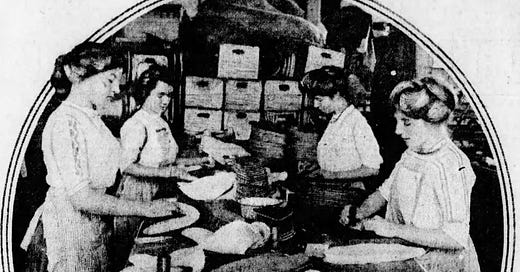Manufacturing Footballs
Despite the many technological advances the world has witnessed since William Gilbert stitched his first rugby ball, the core processes used to make footballs have seen limited change. Footballs are made of leather and other pliable materials, making the automation of many manufacturing processes difficult. Workers in Gilbert's shop would recognize most of the steps used at Wilson's manufacturing plant in Ada, Ohio, which produces a good portion of today's footballs. The Ada plant has football's most widely publicized manufacturing process today, mainly due to it making the NFL's football for decades. Ada's contribution to the game results in an annual migration of beat writers visiting the plant and publishing human interest stories in the run-up to the Super Bowl.
Of course, making footballs does not begin at a football factory. Instead, it starts with cattle raised on a farm or ranch. The selected few go to a slaughterhouse, where their hides are pulled from their carcasses and cured in salt for ten days before being sent to the Horween tannery, which has provided the leather for NFL footballs since 1955.
After arriving at the tannery, the cured hides are trimmed, dehaired, bated, and pickled before being soaked in water and tannins during the tanning process. The resulting leather is stretched, retanned, dyed, and pebbled based on the intended use. Horween sends some of its finest sporting goods leather to Rawlings for use in Major League Baseball gloves. The leather sent to Wilson for NFL balls needs to be tougher because it serves a different function. Nevertheless, the leather is processed to exacting standards regardless of its destination.
The slaughtering, curing, and tanning processes that produce leather for footballs are less labor intensive than in the old days, but not by much. The same is true of the manufacturing process for footballs, which is classic factory work, broken into one hundred or so steps executed at a series of stations. The process begins at the cutting station, where the ball's four panels are die-cut from a hide. Those four panels stay together to become a ball. The panels enter a machine that stamps logos, foils, or artwork on the panel exterior before entering a splitting machine to shave excess leather from the panels' undersides so each weighs nearly the same. The split leather panels then move to a station where they are lined.
Keep reading with a 7-day free trial
Subscribe to Football Archaeology to keep reading this post and get 7 days of free access to the full post archives.




